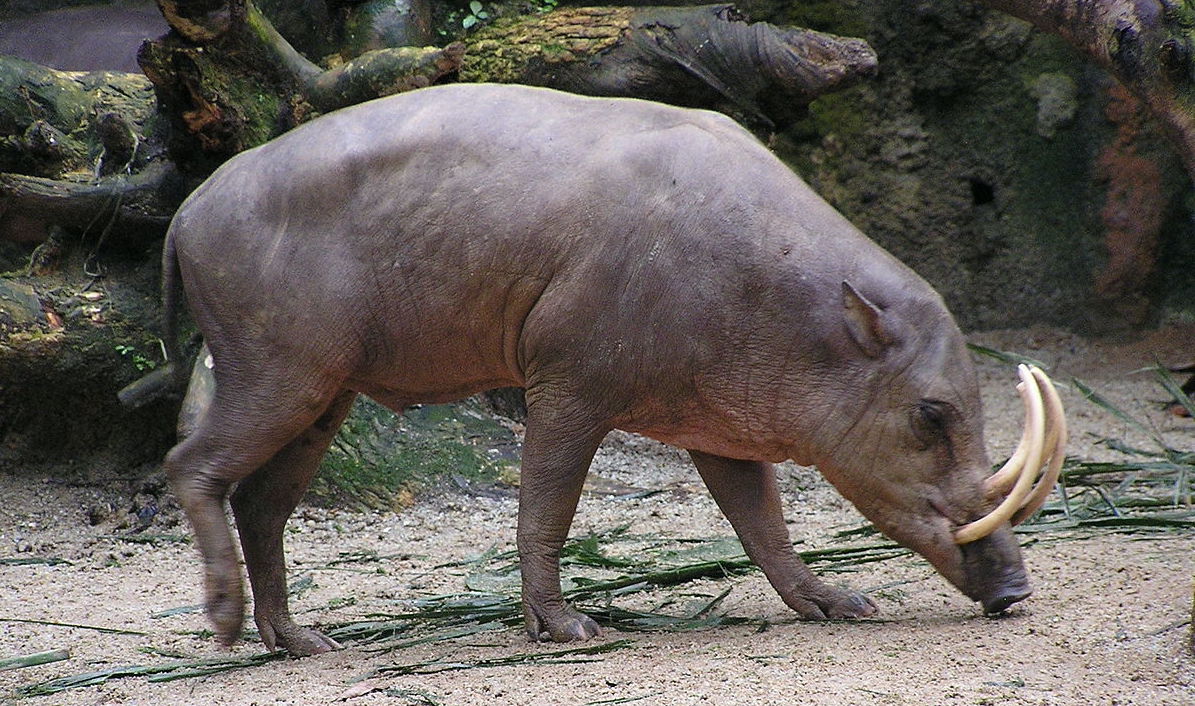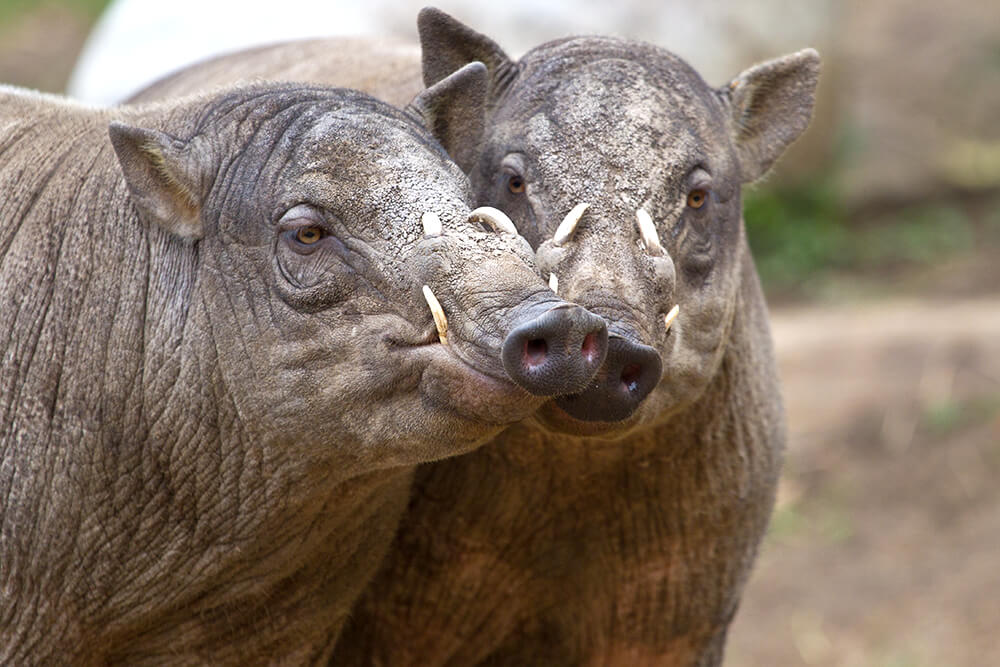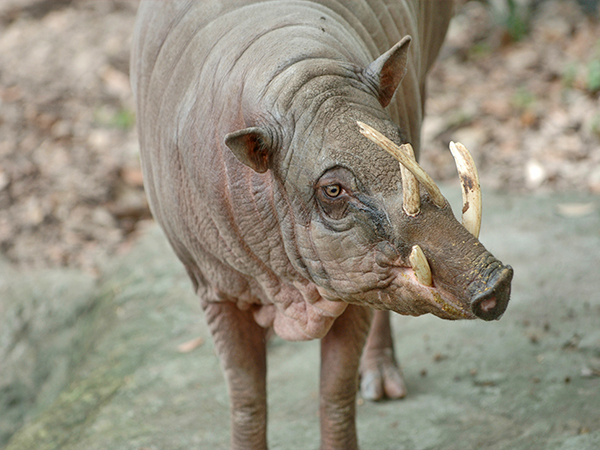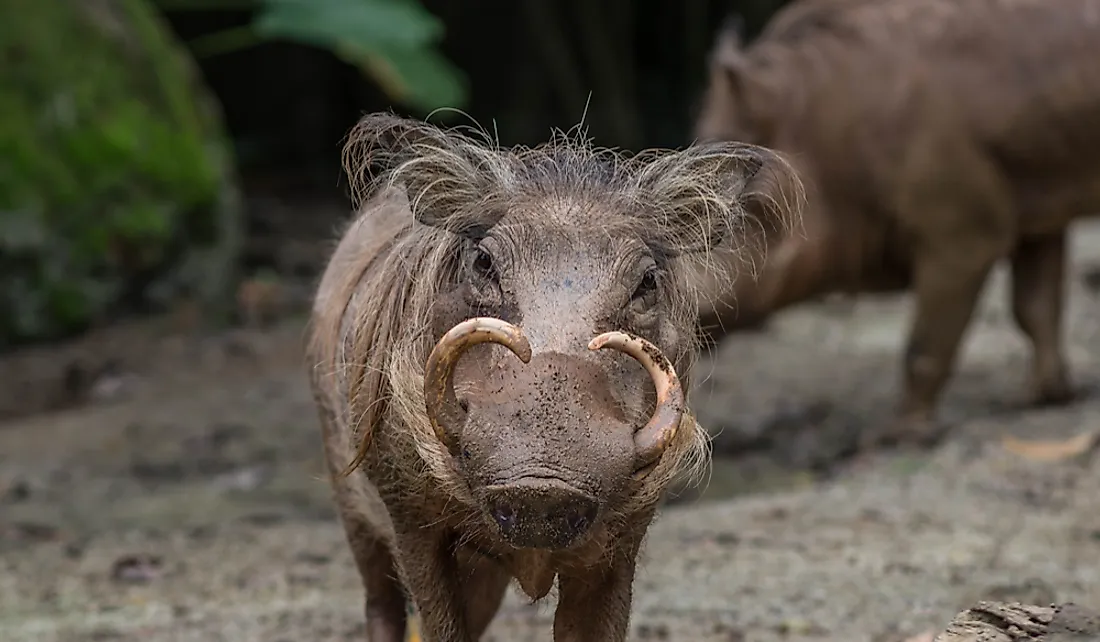STATUS
Near Threatened

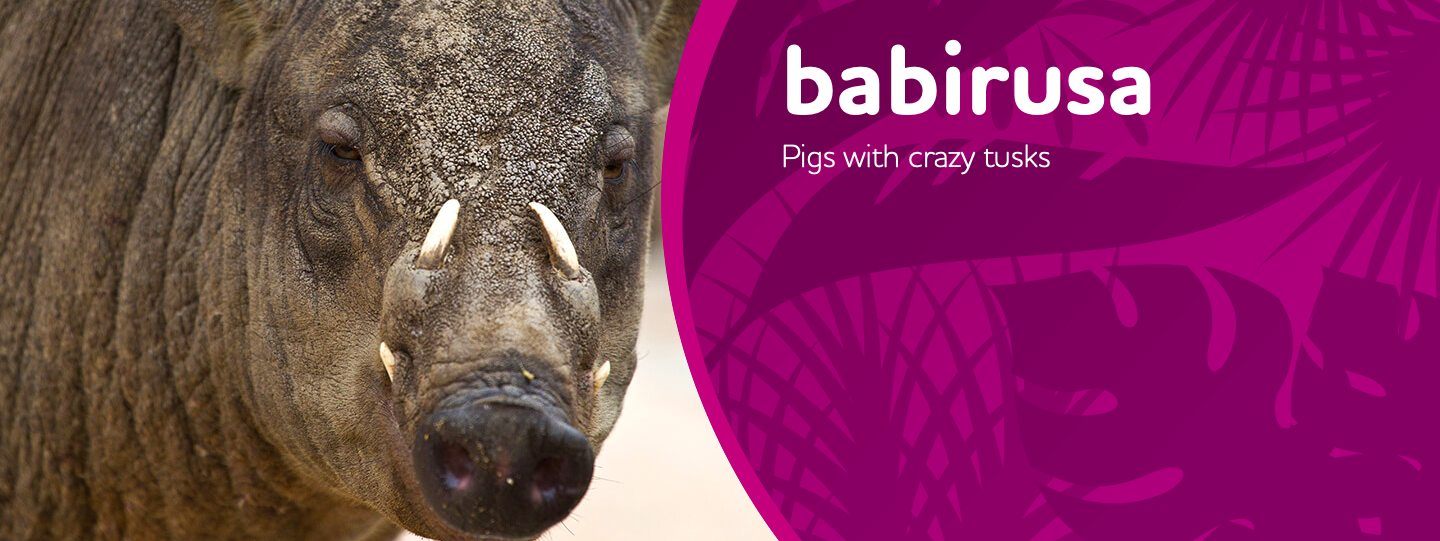
The babirusa, a wild member of the pig family Suidae, lives in isolated parts of the Indonesian island of Sulawesi as well as several nearby islands. It roams in large herds in the forest, and is now mainly restricted to protected areas.
The most well-known babirusa species (Babyrousa celebensis ) is found on Sulawesi. This is the one with such sparse hair that it appears naked. It also has those looping tusks.
It is those tusks that are the most notable feature of the animal. Only males have them.
Unsurprisingly, babirusa tusks have inspired a lot of folkore and tall tales. A popular story is that those upper tusks, if not worn down, eventually grow back into the skull, killing the unfortunate babirusa. This always seemed more tall tale than biological reality.
The Babirusa are very sensitive to any noises in the forest. Often we would see the pigs react to approach of another of their species as if it were a leopard or another threatening predator.
The babirusa is apparently diurnal, active primarily in the morning. About half of their time is spent lying down, usually sleeping. They are swift runners, and often swim in the sea to reach offshore islands. They construct straw nests and wallow in mud. Unlike other suids, the lower tusks are not kept sharp by wearing against the uppers; male babirusa actively hone their tusks on trees. When excited, they clatter their teeth.
Adult male babirusa are primarily solitary, while adult females are often found in small family groups, with a few young and/or sub-adults. Like other suids, they are quite vocal, with a limited vocabulary of low moans or grunts.

STATUS
Near Threatened

SCIENTIFIC NAME
Babyrousa

POPULATION
10,000 left

LENGTH
95-110 cm

WEIGHT
72 - 75 kg

HABITAT
RAINFORESTS
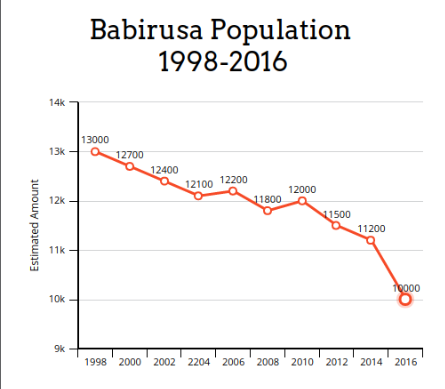
Babirusa are of interest to medical researchers, because the babirusa tusk is the only permanent natural percutaneus (passing through the skin, such as by puncture) structure. When percutaneus devices such as catheters are implanted in humans, the epidermis generally does not adhere well to the device, posing a risk of infection at the site.
Excessive hunting and habitat loss have caused a substantial decline in babirusa populations, despite longstanding legal protections.
deforestation continues, eliminating more habitat and making more areas accessible to poachers
The babirusa is the only mammal with vertically growing canine teeth.
The species has always been rare in zoos, but seems to breed readily in captivity. The largest breeding group is in the zoo in Surabaya, Indonesia.
